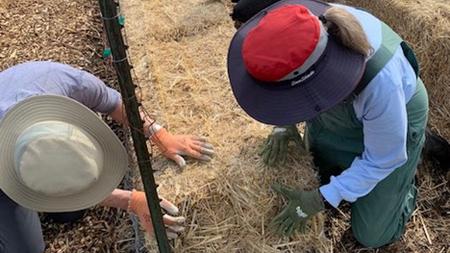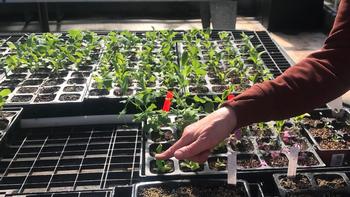News from the Edible Demo Garden
April 2022: Ready, Set, Spring Forward!

Garden Planning
Noting what worked and didn’t work in last year’s garden is the first consideration in the planning process. Would the tomatoes be more productive in a different location than where they were planted last year? Should the green beans be rotated to a different area? Rotating crops is always good practice in order to minimize the risk of soil borne diseases that affect certain plant families. Then, true to the mission of a demonstration garden, there is the desire to try out new crops or to plant something different than what is growing in the Indian Valley College organic farm. This year, tomatillos will be planted for the first time. Last year an experiment to grow potatoes in straw rather than soil proved successful.
Preparing Garden Beds
All the beds require a compost and amendment boost prior to spring planting. Although periodic soil testing can be helpful in determining what specific nutrients are needed, it’s always important to add a source of nitrogen such as feather meal or blood meal. Nitrogen is essential for healthy plants. It is depleted during the growing season and is easily lost in the soil.
The addition of rice straw bales expands the available planting space and the opportunity to experiment with different growing conditions in the edible garden. The straw bales serve as a type of raised bed, but they require seasoning with water and amendments before they can support plant growth. The bales break down during the growing season and need to be replaced each year, so installing and preparing the straw bales kept the garden volunteers busy in March. Detailed information on the use of straw bales can be found at https://anrcatalog.ucanr.edu/pdf/8559.pdf or on our YouTube video below.
Sowing Seeds

